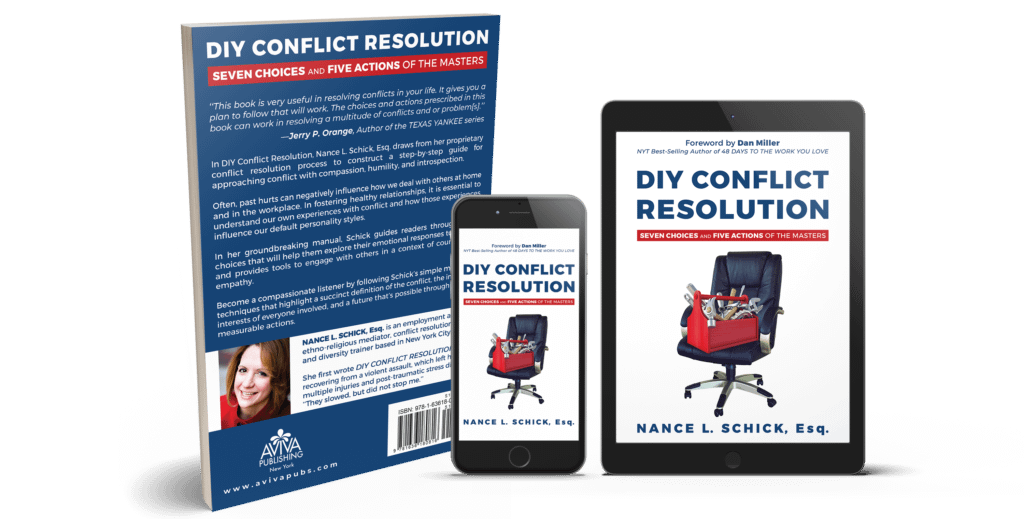As a New York employment attorney and global workplace mediator, I’ve seen firsthand how conflicts can escalate and disrupt lives. I have also been a plaintiff in an employment lawsuit, and until recently I lived most of my life in apartments. The majority of that time was spent in cooperatives, or corporations I owned shares in. I had a good experience, yet I always suspected it was not so pleasant for the building staff.
Imagine living with your entire extended family, including the free-spirited cousins and the older relatives who haven’t evolved with the times. That’s what resident managers must navigate on a daily basis, including after normal business hours. That was why one of them invited me to lead the below discussion with the Superintendents’ Technical Association in New York City. Referencing the Third Ear Conflict Resolution process, I shared some insights on how superintendents and building staff can avoid and resolve conflicts in apartment buildings. Yet I learned as much as I taught!
Why Conflict Resolution Matters in NYC Apartment Buildings
Superintendents, resident managers, and board members have a fiduciary duty to preserve the funds of the entities that own the buildings or the associations that chose them. When fees go up or unexpected repairs are needed, they are the first people blamed. If a co-op’s by-laws fail to hold them harmless, they could not only lose their positions, but they could be sued for breaching this duty. Naturally, this gives them incentive to avoid those surprise costs, and most do a good job with that.
But what about resident complaints? Or demands for special treatment? We talked a lot about this because it was the area they struggled with and hated most about their jobs. From the board member who flirted with the superintendent, thinking she could get a free appliance for the apartment she owned to the one who got on the board to get rid of a manager of color, STA members had stories of far more than disputes about trash collection (although they had these, too).
After a while, it became clear why they wanted to build their conflict resolution skills. It not only saves time and money, it preserves energy and attention for more pressing issues. Plus, the skills developed can be applied outside the building context, enhancing their overall quality of life.

Types of Conflicts
In NYC apartment buildings, conflicts can arise in various forms:
- Tenant-Superintendent Disputes. These often involve repairs, noise complaints, maintenance increases, or rule enforcement.
- Interpersonal Conflicts. Disagreements between building staff members, such as doormen or maintenance workers, are relatively common, especially in increasingly diverse workplaces where employees’ beliefs, personality styles, or work habits may differ.
- Management-Superintendent Conflicts. Building maintenance budgets, staffing levels, or the superintendent’s responsibilities and scope of authority are also sources of conflict in these buildings.
Fortunately, most of these can be resolved out of court.

Minimizing Conflict Risk
While conflict is inevitable in NYC apartments buildings where many people live in close proximity, you can minimize its risk by:
- Ensuring rules are clear and consistently enforced.
- Being transparent about budgets, changes, and the reasoning behind decisions.
- Including affected parties in the decision-making process.
- Acknowledging and accepting differences, focusing on compliance and effectiveness.
The Third Ear Conflict Resolution Process
The Third Ear Conflict Resolution process is designed to help you navigate and resolve conflicts effectively, including in NYC apartment buildings with hundreds of residents. Here are the Seven Choices and Five Actions from the process:
Seven Choices
- Forgive yourself for having the conflict.
- Acknowledge yourself for taking action to resolve it.
- Forgive the world, including the other person(s).
- Free your emotions.
- Clear your mind.
- Assume you know nothing about anything.
- Listen with your third ear for the hurts you can heal.
Five Actions
- Define the conflict succinctly.
- Identify the personal interests driving the conflict.
- Explore a full range of possible solutions.
- Create a future with a specific, measurable action plan.
- Stay on PARR: Plan, Act, Revise, and Repeat until desired results are consistently achieved.
Benefits of Resolving Disputes Out of Court
Most cases resolve before trial, indicating that many disputes can be resolved without a judge or jury. Resolving disputes out of court saves:
- Money
- Time
- Energy
Litigation can be costly, time-consuming, and emotionally draining. Mediation and conflict resolution techniques can lead to win-win solutions and reduce stress for everyone involved, including the lawyers, judges, and court personnel.
Quick Tips
Slow down and listen. Engage in conversations, not monologues. Use the Third Ear Conflict Resolution process to build new brain patterns for effective conflict resolution. Remember, it’s okay to ask for assistance when you can’t resolve conflicts on your own. By applying these techniques, you can foster a collaborative community environment in your NYC apartment building and keep conflicts from escalating to court.
For more detailed guidance, check out my book, DIY Conflict Resolution, which includes a workbook section to help you practice and internalize these techniques.
Want to train your staff to resolve conflicts more effectively?
